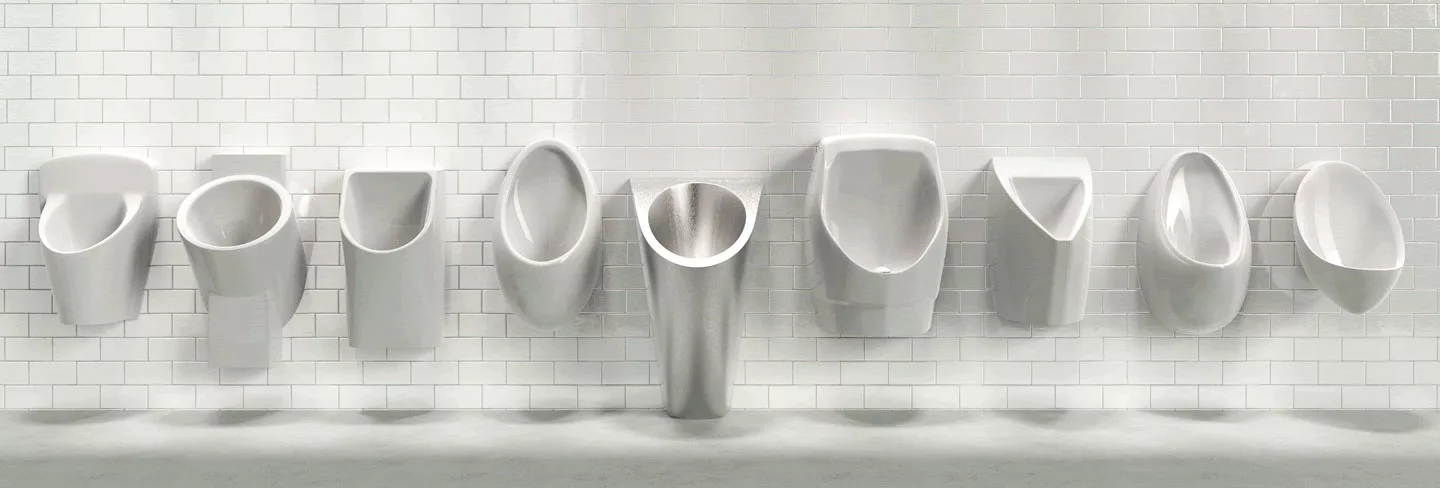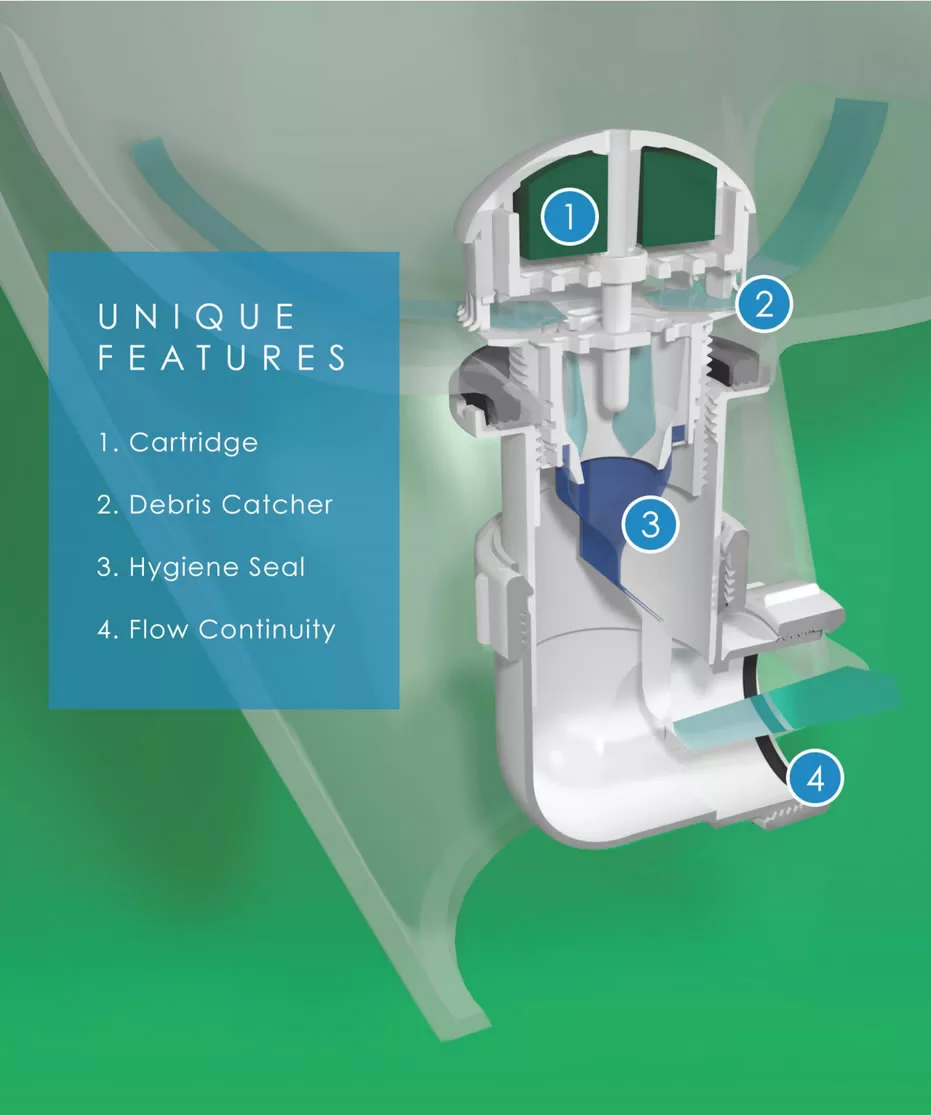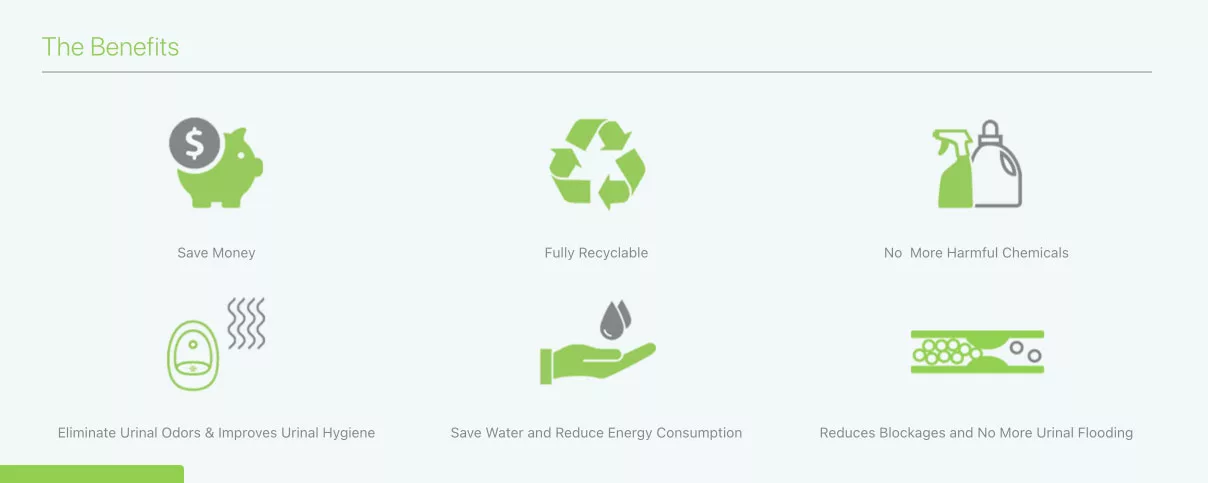Blogs
What is a Waterless Urinal?

Traditional Urinal versus Waterless Urinal
Traditional urinal systems operate with a flush, and as a result consume huge amounts of water. In fact, in busy commercial spaces, they can account for as much as 42% of total water consumption.
Waterless Urinals,as the name suggests, operate without water. And when you remove the flush, you naturally save huge amounts of water. These systems are also commonly referred to as water saving urinals or dry urinals.
But how does this work? And is it sanitary?
More than just a water-saving solution
Waterless Urinals are far more than just a water-saving solution. Although it may seem hard to believe, compared to traditional flushing urinals, a waterless system reduces odours, is more hygienic and sanitary, and is completely non-hazardous. At installation there is no need for an expensive flush mechanism or water inline so fitting the system is simple. And without the need for flush mechanism repair or solenoid valve or battery replacement, maintenance costs are minimal.
How do waterless urinals work?
In a traditional urinal, water is flushed below the bowl, with a strainer in place that is designed to catch debris. Over time, this water causes lime-scale to form, which acts as a breeding ground for bad bacteria. More aggressive cleaning is then needed, with harsher, environmentally damaging cleaning products.
Lime-scale can also lead to blockages, a risk of overflow, increased repair costs, and contributes to an overall negative user experience.
But a waterless (also known as water-saving) urinal eradicates all of these issues. Systems such as VERTECO’s Waterless Urinal System offer a hygienic solution through the use of a patented seal and Waterless Urinal Cartridge. Unlike other waterless systems that use a messy gel, the seal acts as a barrier that allows urine to flow down – but stops odours coming up.

The solution
A waterless (also known as water-saving) Urinal eradicates all of these issues. Systems such as VERTECO’s Waterless Urinal System offer a hygienic solution through the use of a patented seal and bio-cartridge . Unlike other waterless systems that use a messy gel, the seal acts as a barrier that allows urine to flow down – but stops odours coming up.
Is this kind of system hygienic?
Yes – as long as daily cleaning schedules are maintained, waterless systems are cleaner and more hygienic than traditional flush systems in every way. And they smell a lot better too! Urine actually smells worse when it comes into contact with water and air – if you remove the water, and the bowl is able to dry quicker, no smell is left behind.
The fact that the bowl is dry also means there are no damp, moist places for bacteria and viruses to breed and spread. And because waterless urinals have no flush, they are completely contactless, meaning a further reduction in the risk of spreading bad germs.
What’s so special about the waterless Urinal Cartridge
Our efficient water saving urinal Cartridge is the result of 15 years’ of research, field trials and continuous product development.
By letting air into the system, the cartridge allows the urinal to self-ventilate, while the purpose-made mesh catches any debris and prevents blockages. Unpleasant surface odours are combated by the biological block of ‘friendly’ microbes, and this also helps tackle scale, sludge and uric acid.
Finally, the Waterless Urinal Cartridge is totally eco-friendly. Classified as ‘non-hazardous’ under COSHH Risk Assessments, each component is able to work successfully without harming the surrounding eco-system.

Are Waterless Urinals Expensive?
The cost and environmental efficiencies on offer, together with a huge boost to the end-user experience, make the business case for installing, or switching to, a waterless system a compelling one. In fact, when implemented, installed, and maintained properly – they don’t cost organisations anything!
Latest Posts
VERTECO Wins MEFMA 2025 Award for FM Sustainability Impact
VERTECO is delighted to announce that we have been awarded the MEFMA 2025 Award for FM Sustainability Impact.
From Data to Decisions: How Smart Washroom Solutions Drive Facility Efficiency
Facility managers are under ever-increasing pressure to cut costs, improve efficiencies and provide a better user experience
Smart Washrooms in New Buildings: Why Developers Should Integrate Tech Early
While solar panels offer one of the greenest, most sustainable sources of energy, their upkeep and solar panel cleaning maintenance can be far from environmentally friendly.
VERTECO Offers a Free-on-loan Smart Washroom Trial to Building Owners and FM Providers.
Limited-time 3-month Proof of Concept provides free-on-loan hardware and reduced SaaS fees, helping facilities enhance efficiency, sustainability, and user experience.
How a Sustainable Solar Panel Solution is Addressing the Environmental Burden of Solar Maintenance
While solar panels offer one of the greenest, most sustainable sources of energy, their upkeep and solar panel cleaning maintenance can be far from environmentally friendly.
